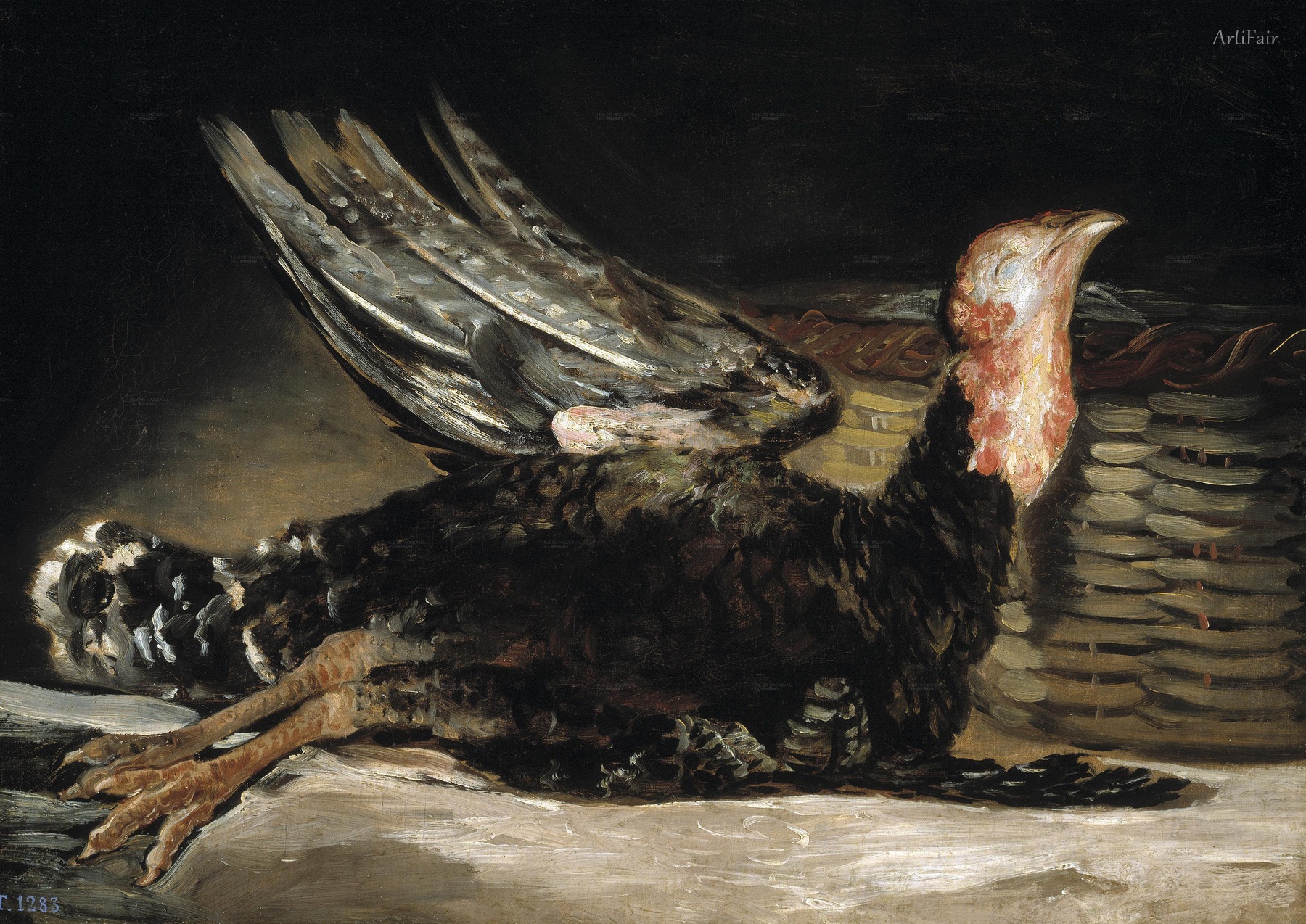
Art Appreciation
This painting captures a dead turkey, sprawled across a surface with its wings slightly raised, almost frozen in a moment of graceful stillness amid inevitable decay. The turkey’s plumage is rendered with thick, textured brushstrokes that contrast starkly with the smooth backdrop of a woven basket, skillfully painted with muted golden and brown tones that add a warm depth to the composition. The head, with its pale, fleshy details, stands out vividly against the dark feathers and the deep shadows behind it, enhancing the somber and stark mood. Goya’s use of chiaroscuro here intensifies the lifelessness while evoking a quiet dignity in the subject—it’s both a reminder of mortality and a testament to the painter’s mastery of light and shadow.
The overall composition is intimate yet dramatic; the turkey occupies much of the canvas space, bringing the viewer close to this silent witness of life’s fragility. The color palette is dominated by earth tones and deep blacks, contrasting with the pale flesh and the warm wooden textures behind, creating a compelling visual tension. This work subtly reflects the historical turbulence of early 19th century Spain, where death and survival were often intertwined, and simultaneously reveals Goya’s interest in everyday subjects infused with philosophical gravity. In this quiet, humble subject, the artist captures something profoundly universal—the stillness after struggle and the beauty in even the most somber realities.